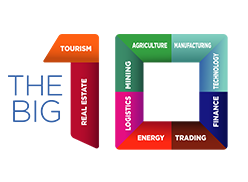In the face of accelerating climate change, the concept of “net-zero” has become a defining global goal. From major economies to small island nations, countries across the world are committing to reducing greenhouse gas emissions and achieving net-zero carbon emissions within the next few decades.
But what does “net-zero” actually mean, and how are different nations approaching it?
What Is Net-Zero?
Net-zero refers to the balance between the amount of greenhouse gases emitted and the amount removed from the atmosphere. A country reaches net-zero when it emits no more carbon than it can absorb through natural or technological means — such as forests, soil, or carbon capture systems.
Achieving net-zero is critical to limiting global warming to 1.5°C above pre-industrial levels, as outlined in the Paris Agreement. The science is clear: the sooner the world reaches net-zero, the better chance we have of avoiding catastrophic climate impacts.
Leading Countries in the Net-Zero Race
1. European Union (EU): Legislative Leadership
The EU has been one of the strongest champions of climate action:
-
Committed to net-zero by 2050.
-
Launched the European Green Deal, aiming to transform the EU economy for a sustainable future.
-
Introduced the Fit for 55 package to cut emissions by 55% by 2030.
-
Investing heavily in green infrastructure, renewable energy, and clean transportation.
2. United Kingdom: Climate Pioneer
The UK was the first G7 country to legislate a net-zero goal:
-
Net-zero target by 2050 enshrined in law.
-
Phasing out coal and expanding offshore wind.
-
Implemented a carbon pricing system and pledged billions in green technology and innovation.
3. United States: Climate Action Reignited
Under the Biden administration, the U.S. rejoined the Paris Agreement and set ambitious climate targets:
-
Net-zero emissions by 2050.
-
Inflation Reduction Act (2022) injects over $370 billion into clean energy and carbon reduction.
-
States like California and New York have set even stricter local targets.
4. China: Balancing Growth and Green Goals
As the world’s largest emitter, China’s commitment is crucial:
-
Pledged to peak emissions by 2030 and achieve net-zero by 2060.
-
Leading global solar and wind energy capacity.
-
Investing in electric vehicles (EVs) and high-speed rail to decarbonize transport.
5. United Arab Emirates (UAE): Net-Zero in the Gulf
The UAE became the first Gulf nation to pledge net-zero by 2050:
-
Investing in solar energy, green hydrogen, and carbon capture.
-
Hosted COP28, underscoring its regional leadership in climate dialogue.
-
Developing sustainable cities like Masdar and reducing flaring in oil production.
6. Small Island States: Frontline Advocates
Countries like Maldives, Fiji, and Barbados have among the most ambitious climate goals — despite contributing least to emissions:
-
Advocating for net-zero by 2030–2040.
-
Investing in coastal protection, renewable energy, and climate resilience.
-
Pushing global powers to increase climate finance and accountability.
Common Strategies Toward Net-Zero
Despite varying timelines and capacities, most countries are deploying similar tools:
-
Renewable Energy: Massive expansion of solar, wind, hydro, and geothermal.
-
Electrification: Shifting from fossil fuels to electric power in transport and industry.
-
Energy Efficiency: Retrofitting buildings, modernizing grids, and optimizing industrial processes.
-
Carbon Pricing: Introducing taxes or cap-and-trade systems to put a cost on emissions.
-
Nature-Based Solutions: Reforestation, wetland restoration, and sustainable agriculture.
-
Carbon Capture and Storage (CCS): Developing technologies to trap and store CO₂ from power plants and industrial sources.
Challenges on the Road to Net-Zero
While momentum is growing, significant obstacles remain:
-
Financing gaps, especially in developing nations.
-
Technological barriers in decarbonizing hard-to-abate sectors like cement and steel.
-
Policy inconsistency and political opposition in some regions.
-
Social equity concerns, particularly for workers in fossil fuel-dependent communities.
To address these issues, international collaboration, climate finance, and inclusive policymaking are essential.
A Global Effort With Local Action
The journey to net-zero is a shared responsibility, but progress will look different in each country. While advanced economies have the resources to lead, emerging markets require support to transition without compromising development.
At the heart of this movement is the understanding that climate action is no longer optional — it is a fundamental pillar of long-term economic, environmental, and human security.
Conclusion: The Path Ahead
The global push toward net-zero is a transformative opportunity. It promises not only to prevent the worst effects of climate change but also to create millions of green jobs, spur innovation, and improve public health.
From the skyscrapers of the UAE to the forests of Scandinavia and the coasts of the Pacific, nations are aligning on a common goal: a cleaner, more resilient world for future generations.
The question is no longer whether we should pursue net-zero — but how fast we can get there.
Read more on The Big 10:
How Energy sources are changing to be more Environmentally Friendly
Sustainable Agriculture: Global Trends in Food Production and Climate-Smart Farming
The Role of Global Leadership in Achieving the UN’s Sustainable Development Goals (SDGs)


